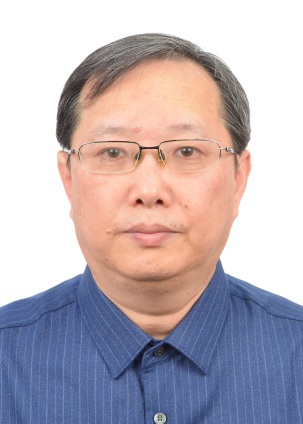|

|
何思明
研究员 博导 |
|
|
个人简介:
何思明,男,1968年生,四川省蓬溪县人,中共党员,工学博士,研究员(2级),博士生导师,山地灾害与地表过程重点实验室副主任。
招生专业:
岩土工程专业博士、岩土工程专业硕士
学习与工作经历:
1987.9-1991.7:成都科技大学(四川大学)工程力学专业,获学士学位。
1996.9-1999.7:四川大学水利水电学院,获岩土工程专业硕士学位。
2001.9-2004.6:西南交通大学土木工程学院,获岩土工程博士学位。
1991.7-1996.9:中国第十九冶金建设公司建筑设计研究院,地基基础研究室。
1999.7-2001.9:中国第十九冶金建设公司建筑设计研究院,总工程师。
2004.7-至今:中国科学院成都山地灾害与环境研究所
研究方向及科研工作:
主要从事山地灾害形成演化机理与减灾关键技术研究。在边坡稳定性的极限分析与极限平衡理论;边坡预应力锚固技术;高切坡超前诊断与超前支护;崩塌滚石灾害形成演化机理与防治关键技术;强震带边坡位移控制设计与柔性防护;滑坡泥石流及其链生灾害动力学机理、物理模型构建与定量风险评价;山区小流域山洪泥石流灾害精细化数值预报、基于地震信号的山地灾害监测预警与参数反演、山区河流推移质监测等研究等方面取得具有国际先进水平的研究成果。荣获中国科学院杰出科技成就奖、中国科学院王宽诚西部学者突出贡献奖、四川省学术与技术带头人、李月华优秀教师奖等荣誉称号,入选职业生涯全球2%顶尖学者。在Nature 、GRL、JGR、WRR等国内外重要学术期刊上发表论文400余篇,其中SCI论文300余篇,出版学术专著5部,授权发明专利10项,获省部级科技进步一等奖6项。
主持的科研项目:
[1]国家自然科学基金面上项目:边坡锚固结构耐久性与寿命预测,35万,2006-2008
[2]国家自然科学基金面上项目:滚石的冲击与回弹特性研究,50万,2008-2010
[3]国家自然科学基金面上项目:大型地震滑坡碎屑化动力学机理与定量风险研究,85
万,2011-2014
[4]国家自然科学基金(NSFC-ICIMOD)国际合作重点项目:青藏高原高山峡谷区重大
山地灾害动力演进定量预测与风险评估,198万,2017-2019
[5]国家自然科学基金重大项目课题:高位能岩土体超强运动与大规模山地灾害链生机制
408万,2018-2022
[6]国家自然科学基金面上项目:青藏高原东缘大型滑坡-堰塞湖-溃决洪水灾害链动力演进
理模型与定量预测,75万,2018-2021
[7]科技部支十二五科技支撑计划项目(课题):龙门山地震带崩塌滑坡泥石流灾害防治技术
研究与示范,534万,2011-2014
[8]科技部重点研发计划(课题):震后泥石流成灾机理与防治工程减灾效果评价,300万,
2018-2021
[9]四川省科技厅重点研发计划:安宁河断裂带地震次生山地灾害预判与风险,100万,2017-2018
[10] 十四五重点研发计划课题:大地震复合链生灾害动力学机制(2022YFF0800604),550万元,2023-2027
[11]西藏重大专项课题:西藏重大自然灾害监测预警技术,184万,2024-2027
社会任职、荣誉称号
社会任职: 四川省地震学会理事、中国水保学会滑坡泥石流专委会委员、中国岩石力学与工程学会会员、中国地质学会工程地质专业委员会委员
荣誉称号:中国科学院王宽诚西部学者突出贡献奖;四川省有突出贡献的优秀专家;四川省学术与技术带头人;中国科学院优秀教师。
科学奖励:
[1]汶川地震次生山地灾害形成机理与风险控制,四川省科技进步一等奖,2013
[2]严寒地区交通基础设施状态监测与安全控制关键技术,河北省科技进步一等奖,2016
[3]山区公路滑坡多场监测、 预警与防治关键技术,重庆市科技进步一等奖,2021
[4]基于时空大数据的交通灾害评估预警及服务关键技术,中国公路学会一等奖,2015
[5]长江上游山地灾害与水土流失地图集,中国水土保持学会科学技术一等奖,2015
[6]中国科学院杰出科技成就奖(2020年度)
代表性论文、论著
10篇代表性论文
【1】Zhang Z, Liu M, Tan Y J, et al. Landslide hazard cascades can trigger earthquakes [J]. Nature communications, 2024, 15(1): 2878.
【2】Zhang Z, Walter F, McArdell B W, et al. Insights from the particle impact model into the high‐frequency seismic signature of debris flows[J]. Geophysical Research Letters, 2021, 48(1): e2020GL088994.
【3】Zhang Z, He S. Analysis of broadband seismic recordings of landslide using empirical Green's function[J]. Geophysical Research Letters, 2019, 46(9): 4628-4635.
【4】Zhang Z, Tan Y J, Walter F, et al. Seismic monitoring and geomorphic impacts of the catastrophic 2018 Baige landslide hazard cascades in the Tibetan plateau [J]. Journal of Geophysical Research: Earth Surface, 2024, 129(2): e2023JF007363.
【5】Deng Y, He S, Scaringi G, et al. Mineralogical analysis of selective melting in partially coherent rockslides: bridging solid and molten friction[J]. Journal of Geophysical Research: Solid Earth, 2020, 125(8): e2020JB019453.
【6】Deng Y, Yan S, Scaringi G, et al. An empirical power density‐based friction law and its implications for coherent landslide mobility[J]. Geophysical Research Letters, 2020, 47(11): e2020GL087581.
【7】Zhu L, Tang X, He S, et al. Geomorphology and sedimentology of the Nyixoi Chongco rock avalanche and implications for emplacement mechanisms [J]. Journal of Geophysical Research: Earth Surface, 2025, 130(3): e2024JF007666.
【8】Zhang Z, Walter F, McArdell B W, et al. Analyzing bulk flow characteristics of debris flows using their high frequency seismic signature [J]. Journal of Geophysical Research: Solid Earth, 2021, 126(12): e2021JB022755.
【9】Lei X, He S, Abed A, et al. A generalized interpolation material point method for modelling coupled thermo-hydro-mechanical problems[J]. Computer Methods in Applied Mechanics and Engineering, 2021, 386: 114080.
【10】Liu W, He S. A simplified single-phase depth-averaged model for rock-ice avalanche movement considering ice melting [J]. Engineering Geology, 2024, 337: 107600.
出版的学术专著
[1]《边坡锚固结构作用机理与耐久性设计》 2017 交通出版社
[2]《强震带边坡位移控制设计与柔性支护技术》 2015 交通出版社
[3]《崩塌滚石灾害形成演化机理与减灾关键技术研究》 2015 科学出版社
[4]《长江上游山地灾害与水土流失地图集》 2014 科学出版社
[5]《地震扰动区重大滑坡泥石流灾害防治理论与实践》 2016 科学出版社
联系方式:
通讯方式:四川省成都市天府新区群贤南街189号 邮编:610213,中国科学院、水利部成都山地灾害与环境研究所
电话:13688084541; E-mail: hsm@imde.ac.cn
欢迎具有数学、力学、工程地质、地球物理、地球化学、岩土工程、结构工程等相关专业背景的本科生、硕士研究生报考!

